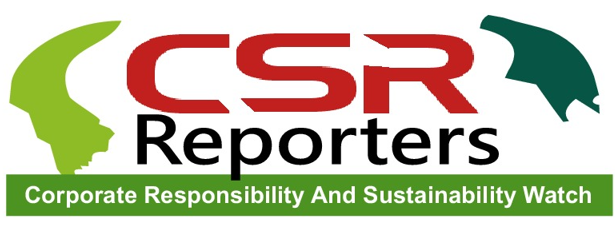
One of my most notable stories posted last year was an interview, coincidentally published around this time for Global Accessibility Awareness Day, with Intel CEO Pat Gelsinger. Gelsinger, who wears hearing aids, spoke with me about the chipmaker behemoth’s commitment to disability inclusion and his own experiences using assistive technology to augment his hearing loss. Also present during that discussion was Darryl Adams, Intel’s director of accessibility. A disabled person himself, having been diagnosed with retinitis pigmentosa at 14, Adams told me his role involves “[making] computing and access to digital information more accessible for everyone and to make Intel an employer of choice for employees with disabilities.”
What I wrote in my lede then remains relevant now: Most people don’t associate Intel with accessibility and assistive tech, but they should.
I recently reconnected with Adams via videoconference in advance of Intel’s release of its 2023–24 Corporate Responsibility Report. The Report, which is being released today and includes a letter penned by Gelsinger, copiously details how the Santa Clara-based company is working to address societal issues such as sustainability, artificial intelligence, climate change, and yes, accessibility. Of note for disability, Intel touts it has won acclaim from disability rights organizations such as the American Association of People with Disabilities and Disability IN for its work in highly prioritizing the inclusiveness of disabled people.
“We’re continuing to progress in our journey around how we think about both disability inclusion and supporting our employees internally through accessibility and innovation. Our [employee resource groups] are all different touch points that we can be building upon to make that employee experience as welcoming as we can,” Adams said to me of Intel’s philosophy on disability inclusion in an exclusive interview.
Adams conceded to the notion that most people think of Intel as the company that builds computer chips. People know the “Intel Inside” sticker plastered on Windows laptops and the famous jingle. Yet Adams was keen to emphasize he believes there’s a “bigger story” to Intel that goes beyond being The Processor Company. He said “we’re not only thinking about the core processing that we’re known for, but we’re doing the computer architecture and working very closely with computer manufacturers and operating system vendors to enable the experiences that people have today.” He said this work is important because computing is “changing rapidly” experientially nowadays due to the meteoric rise of generative AI and other types of machine learning. Intel, Adams added, actually is a sprawling software organization—last year, he noted there are over 19,000 developers—whose job it is to build ecosystems which integrate hardware and software. Intel isn’t solely in the business of selling hardware; they also sell the “ecosystem that allows software developers and application developers at other companies to build businesses and build industries on,” Adams said.
On the people side, Adams told me a key part of Intel’s social justice initiatives lies in its “robust and intelligent” fleet of employee resource groups, or ERGs. The disability-focused ERG, he said, is a “fantastic global community” which enable workers who identify as being disabled the opportunity to reach out to like-minded people and share their experiences and challenges associated with their condition(s). It’s “powerful” stuff, Adams said, which ultimately benefits product strategy insofar as, being a technology company, Intel can use the ERGs to “get their feedback and conduct research where [people] can participate in design sessions for technologies and products to come.” This, Adams said, is precisely what Intel did with the hearing aid initiative I reported on a year ago. Intel employs a number of people who use hearing aids, and the company got employees set up with audiologists who did fittings prior to them test-driving the technology and thus providing feedback.
“I think [that testing] been a very powerful thing, because not only do they get benefit from being on the cutting-edge of some of this technology, we’re benefiting from their insights,” Adams said of doing inclusive employee testing. “They feel like they’re contributing in that way… this could be an employee in finance, or it could be an employee and they’re not necessarily technologists, but they’re still able to contribute to the greater goal of creating these successful products.”
As to the aforementioned Corporate Responsibility Report, Adams said the announcement, which comes a little more than a week before this year’s Global Accessibility Awareness Day, highlights a “fair number of positive strides around accessibility, innovation at the company, disability inclusion, and striving toward the goals in particular around self-identification.” Adams said most large companies want to encourage self-reportage of one’s disability status, saying Intel’s goal is aiming for 10% of employees. Although he acknowledged this number isn’t representative of disability in the wider world, Adams said the bar for self-identification is “pretty high” as it relates to people feeling comfortable enough to disclose such information in the workplace.
Intel, he said, does a lot of work internally to ensure it’s a great place to work for employees with disabilities. It isn’t perfect, but Intel does its best to make clear to people, disabled or not, that they are free to show up to work every day as their authentic selves. There are a slew of programs inside Intel designed to help push that ideal, with Adams saying Intel has identified “champions of accessibility” whose passion lies in creating a workplace culture that is “more inclusive and more accessible” for disabled workers. This “accessibility champions network,” as Adams characterized it, comprises people with and without disabilities who meet monthly for interactive meetings where people are sharing about their experience living with disability. The storytelling is invaluable that go a long way in acknowledging people’s lived experiences and “celebrating the wins” of such candid conversation.
“It’s hard to change culture, but these are the types of things that are, over time, doing just that,” Adams said. “They’re exposing the growth in [disability inclusion] and raising awareness across the board. More people are advocating instead of just being aware, and now they’re out there doing the work. It’s exciting. It’s a proud achievement for us.”
Adams expounded on Intel’s inclusive mindset, telling me he’s “seen a trend” in his conversations as part of his role leading accessibility and as chair of the company’s Disability Leadership Council. The trend line is moving upwards, as Adams has noticed more “wonderful” outward conversations around disability; that more people are sharing their experiences being disabled has meant finding allies facing similar circumstances. In other words, people are realizing they aren’t alone.
“I have to imagine that over the global footprint of the company, we still have room to grow. We’re not hitting everyone,” Adams said of being better at disability inclusion. “That’s my goal over time: to ensure the experience is good. This is a matter of continuing to plug in the gaps and resolve them over time. By and large. things are doing very, very well.”
Looking towards the future, Adams hopes anyone who’s interested in a career with Intel will understand “their abilities are welcome” regardless of their circumstances. Intel wants everyone to have a positive experience interacting with them, with Adams telling me he wishes prospective employees know they’re welcome and that Intel will do its best to support them in every way possible. He made a clear yet poignant distinction that Intel doesn’t work on accessibility and disability inclusion because it’s trendy. They do it, he said, because Intel feels “we’re celebrating and recognizing” the disability community rather than merely tolerating and accommodating them as bound by law. Even more poignantly, Adams said the primary reason accessibility is so essential is because disabled people live in a society decidedly undesigned for them, thereby necessitating creativity and ingenuity as a means of survival.
“That creative mindset is so valued on project teams in big companies or in any organization,” Adams said. “It’s not so much, ‘let’s accommodate a person with a disability’ but ‘let’s be deliberate and reach out and ensure we have these insights and these perspectives on our teams.’ The simple fact is [disabled people] are a part of the team and are contributing. That [mindset] is going to result in a better product or outcome. I want to see that scale… I want to see it consistently.”









